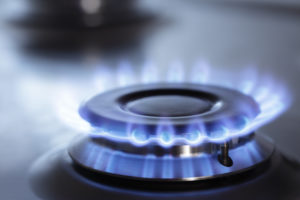 Natural gas fell for a second day on Friday but remained on track to settle the week with a hefty gain as warm weather across many regions of the US induced moderately stronger cooling demand, while an unimpressive build in US stockpiles failed to spark significant downward movement.
Natural gas fell for a second day on Friday but remained on track to settle the week with a hefty gain as warm weather across many regions of the US induced moderately stronger cooling demand, while an unimpressive build in US stockpiles failed to spark significant downward movement.
Natural gas for delivery in July traded 0.99% lower at $2.797 per million British thermal units at 08:10 GMT, shifting in a daily range between $2.826 and $2.788. The contract slid 2.3% on Thursday to $2.825 following three days of gains that saw the energy source rise a combined 11.2%, and is currently up 8% for the week.
The Energy Information Administration reported yesterday that natural gas inventories rose by 111 billion cubic feet in the week ended June 5th, in line with analysts median forecasts for a 112-113 bcf jump and well above the five-year average build of 89 bcf. Stockpiles rose by 109 bcf a year earlier.
Total gas held in US storage hubs amounted to 2.344 trillion cubic feet, expanding a surplus to the five-year average of 2.300 trillion to 1.9%, or 44 bcf, from 1.0% a week earlier. Stockpiles were also at a surplus of 47.3% compared to the year-ago supplies of 1.591 trillion cubic feet.
The reported build, coming largely in line with expectations, failed to stoke a significant downward move and reverse a weather-driven weekly advance. According to NatGasWeather.com, natural gas demand in the US will be moderate compared to normal through June 18th, and locally high across the southeastern US, while trending a bit lower during the fourth week of June.
Warm conditions
The eastern, western and southern US continue to experience highs in the upper 80s to 90s, NatGasWeather.com said, inducing moderately strong cooling demand. The Southeast, including Florida, will drive the nation’s strongest natural gas demand as temperatures reach the mid 90s to mid 100s. Canadian weather systems tracking through the Midwest and Northeast will bring a slight cooling, keeping highs in the 70s. The southern half of the country will remain quite warm through next week, but with the North being somewhat cooler, national natural gas demand will hover near moderate, failing to jump to high.
June 18th’s report will still show another above-average build, but much closer to the average. Early estimates call for a gain of slightly below 100 bcf for the week ended June 12th, compared to the five-year average inventory increase of 87 billion cubic feet and the year-ago build of 112 bcf.
Overall active weather will continue into the fourth week of June as well. The eastern, western and southern US will remain very warm to hot as readings hover near the average or several degrees higher, while the north-central US continues to feel the effects of Canadian systems that will keep readings near normal and quite comfortable for the season.
Readings
According to AccuWeather.com, the high in New York on June 13th will be 85 degrees Fahrenheit, 6 above usual, before easing to near-seasonal as of June 16th through June 21st. Chicago will peak at 74 degrees today and tomorrow, 5 below normal, followed by a rebound to the near-seasonal upper 70s and lower 80s afterwards.
Down South, highs in Houston will be in the upper 80s through June 19th, slightly below the average 90, before jumping into the low-mid 90s. On the West Coast, Los Angeles will fail to exceed the seasonal 77 degrees tomorrow, and will jump into the 80s as of June 15th.
Pivot points
According to Binary Tribune’s daily analysis, July natural gas futures’ central pivot point stands at $2.853. In case the contract penetrates the first resistance level at $2.891 per million British thermal units, it will encounter next resistance at $2.958. If breached, upside movement may attempt to advance to $2.996 per mBtu.
If the energy source drops below its S1 level at $2.786 per mBtu, it will next see support at $2.748. In case the second key support zone is breached, the power-station fuel’s downward movement may extend to $2.681 per mBtu.
In weekly terms, the central pivot point is at $2.623. The three key resistance levels are as follows: R1 – $2.691, R2 – $2.791, R3 – $2.859. The three key support levels are: S1 – $2.523, S2 – $2.455, S3 – $2.355.





